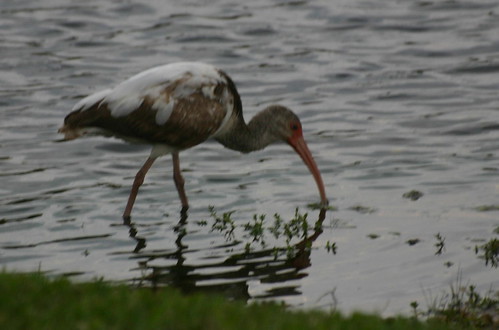This evening’s Key West radar suggests the departure of migrating birds from the north coast of Cuba and from the Keys. Maybe it is just a weather disturbance, but it looks promising. As our meteorologist son is a fire weather specialist, the fires in Central and West Texas are keeping him busy, and he cannot provide me with guidance in interpreting this loop. Check BADBIRDZ (Florida Migration Radar link at the left of this page) as migration progresses.
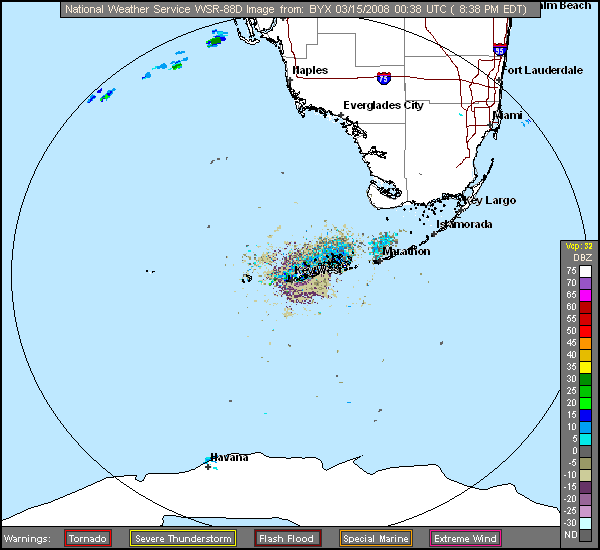
Our Travelers Palm, a plant that looks like a cross between a banana tree and a palm, but is in a genus all its own, shows its subtle, but patriotic colored bloom:
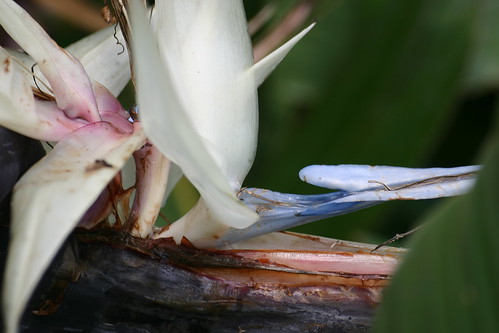
From my boyhood days up East, I remember how spring came on with a great flourish. It seemed that everything happened all at once, heralded by the cries of spring peepers and the smell of skunk cabbage and the swelling of the pussy-willow buds. Early May in New Jersey meant a burst of color and the arrival of the warblers, even before many of the trees had begun to leaf out.
Here in South Florida, spring begins to sneak in around mid-February, when the mangos and apricots start to bloom. Later in Februrary the frogs and toads begin their chorus along the lake, with the overpowering bass notes of the exotic Giant or Cane Toad sounding much like the echoes of a distant lawn mower or diesel engine. The results of their nuptial chorus are now much in evidence.
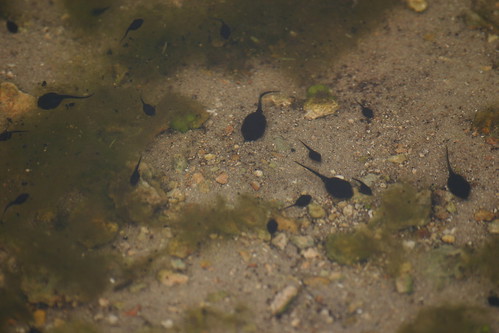
This evening the tadpoles and the numerous small fish that congregated around the shore of our lake attracted several interesting birds that I was able to shoot without leaving my patio. This Lesser Yellowlegs paid us a visit.

Two Blue Herons, the Great and the Little, stood side by side.
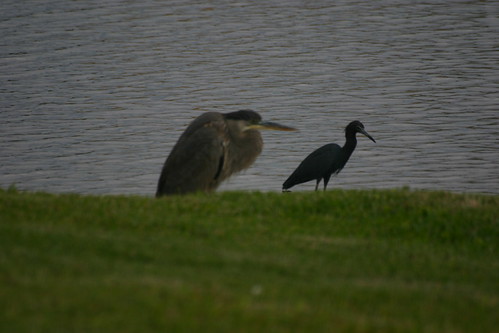
They were joined by a Tricolored Heron to make it a triumverate.
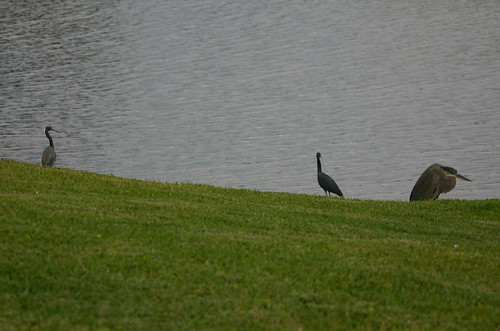
Here is a close-up of the Tricolored, showing off its nuptial plumes.

An immature White Ibis also took part in the feast, blindly probing and sweeping its partially open bill back and forth in the water..
